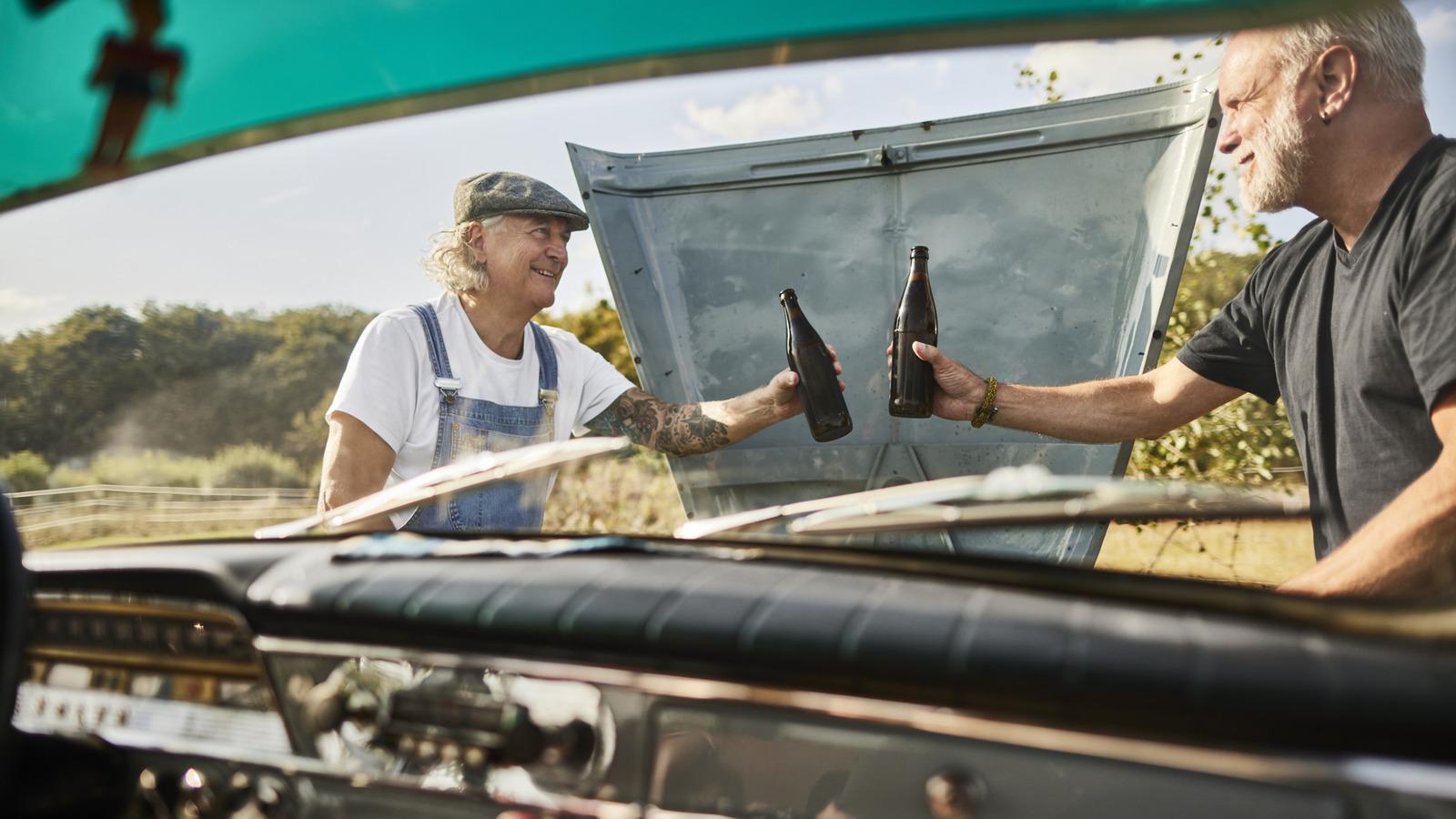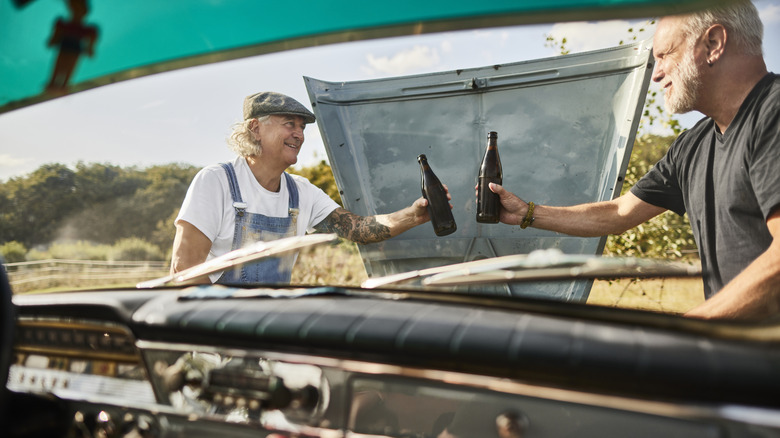
Oliver Rossi/Getty Images
There was a time when beer was simpler — and cheaper. But many of these vintage beers have vanished from America's fridges, not discontinued but are currently unpopular and hard to find. But we think this is a shame and there's room for these old-school beers in our lives.
Back in those days gone by, a trip to the beer aisle didn't mean choosing between a dozen IPAs or parsing notes of grapefruit peel and dry-hopped bitterness. Rather, beer was beer and you grabbed whatever you could reliably find at your local grocery store. It came in cans with bold fonts, loyal regional followings, and mascots that wouldn't make it past a marketing meeting today. These were the vintage brews your parents drank after mowing the lawn, the kind you grabbed for a backyard cookout. Sure, they weren't fancy but that was the point.
In the postwar decades, local breweries flourished, each with its own flagship beer. But as national brands grew and tastes shifted, many of these beers began to disappear. A few have clung to life in limited markets, but you're not likely to find them stocked at your average big-box store. For a generation of drinkers, they exist mostly as memories.
This is a look back at the unfussy brews that once filled America's fridges. And all of them are still available today. So, whether you're looking for a trip down memory lane or a new-to-you retro beer to try, you're in the right place.
Red Dog
In the mid-'90s, Red Dog beer was everywhere. Launched by Miller Brewing Company in 1994, Red Dog positioned itself as the cooler cousin to mainstream lagers. It wasn't a craft beer, but it didn't feel completely corporate either. It was meant for Gen X drinkers who didn't want a sip of their dad's Old Style but also weren't trying to be beer snobs.
As for the type of beer, it's a lager but more full-bodied and slightly stronger than most lagers on the market at the time, and smoother than you might expect. It had a bit more body, a touch of sweetness, and just enough edge to make it feel like something different. For a while, it worked. Red Dog gained a quick following, helped along by ads that leaned hard into that gruff, anti-establishment aesthetic.
But the moment didn't last. As the craft beer movement grew and nostalgia for big-brand offshoots waned, Red Dog slipped off shelves. It never fully disappeared, but it lost its prime fridge space long ago. For a brief time, though, it gave beer drinkers something that felt just a little more daring without straying too far from the familiar. Today, there are a whole world of craft beers that fill that gap, but at the time, this felt quite revolutionary.
Stag
If you grew up in the Midwest, there's a good chance your dad or grandpa had a case of Stag in the garage fridge. Brewed in Belleville, Illinois, Stag was a staple in parts of Missouri and Southern Illinois for much of the 20th century. It's a classic American lager: crisp, dry, and no-nonsense.
Stag didn't need gimmicks. It was the kind of beer you drank after a long shift or cracked open at a tailgate. Its fans appreciated that it was clean and slightly bitter, with a hop profile that stood out more than other budget lagers. In some ways, it had more in common with a German pilsner than with its watery mass-market competitors.
Despite a loyal regional following, Stag struggled over the years. It changed hands several times and was eventually bought by Pabst Brewing Company, which shelved it in most markets. These days, you might spot it at a dive bar in the right ZIP code, but it's not something you'll see everywhere.
We're pleased that this beer has managed to hold on over the years, but it's a shame it's now owned by a huge parent company — and that it's hard to get ahold of. If it isn't available in your area, though, don't worry. You can always order it online.
Falls City Beer
In Louisville, Falls City Beer was part of the city's identity. First brewed in 1905, Falls City was a response to the growing control of beer giants. It had an independent streak from the start, surviving Prohibition and fighting its way to becoming a popular beer in many Southern states by the 1950s and 1960s.
For decades, Falls City was Louisville's hometown beer. It was brewed locally, advertised proudly, and just about everyone was drinking it. But like many midsized breweries, it couldn't withstand the pressure of national consolidation. The original brewery shut down in 1978, and although the brand limped along under new ownership, it faded from view.
However, that wasn't the end of the story. There was a revival in the 2010s, with new investors bringing the name back to life and releasing a wider line of beers. It now exists as a bar in Louisville serving craft beers, with some canned options available locally and in specialty stores elsewhere in the nation. It has a lineup that includes pilsners, IPAs, red ales, pale ales, and more. But for those who remember the original, it's the classic lager they think of.
Old Milwaukee
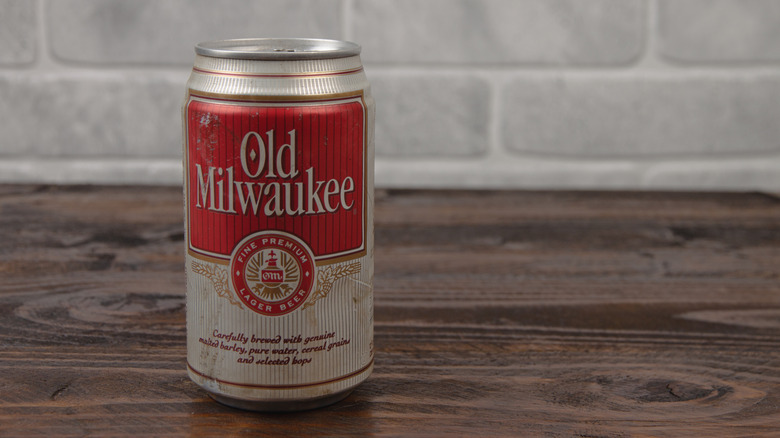
Venn-Photo/Shutterstock
Old Milwaukee has never been fancy. That is part of its charm. First brewed way back in 1849, it was the beer of fishing trips, yard work, and folding chairs on the driveway. But what made it stand out in the crowded field of budget lagers was its brilliant marketing.
If you watched TV in the '80s and '90s, you probably remember the commercials: rugged guys in the great outdoors, cracking open cold cans and declaring, "It doesn't get any better than this." The tagline was so effective it became part of the cultural lexicon. For a generation, Old Milwaukee was a big deal.
The beer itself is easy going. Maybe forgettable, but in an inoffensive way. Pale, mild, and drinkable, it didn't try to impress. It was the kind of beer you could hand to anyone without any explanation, and without a look of disgust falling on their face. For years, that was exactly what people wanted. Simple and reliable.
Eventually, tastes changed. Craft beer exploded, moving many people to IPAs and other ales from basic lager. Plus, big light lagers got even more aggressive with their advertising. And Old Milwaukee slowly disappeared from prime shelf space. It still exists, but it's not the first name on anyone's lips when they ask for a lager.
Genesee Cream Ale
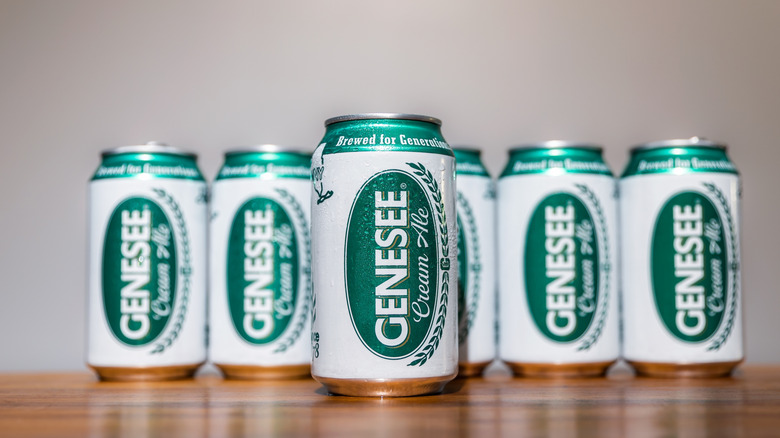
Scott Heaney/Shutterstock
Genesee Cream Ale has been quietly holding its own since 1960, and if you've never tried it, you might be surprised by how drinkable it is. Brewed in Rochester, New York, this hybrid-style beer walks the line between a lager and an ale. It's fermented like an ale but then cold-aged like a lager, which gives it a unique crispness with just enough creamy smoothness to make it different. This might mean more to you if you know the difference between an ale and a lager, but either way, it tastes good.
A firm favorite among some — probably your grandpa included — Genesee Cream Ale never completely disappeared, but it did fall out of fashion. As beer trends moved toward either light macro lagers or bold, bitter craft brews, this easy drinking cream ale got lost in the shuffle. That's a shame, because it's the kind of beer that's satisfying without trying too hard. Light-bodied but not watery, with a touch of sweetness and a clean finish, it's great on its own or alongside a burger or plate of wings.
If you're looking to revisit, or discover, what classic American cream ale is supposed to taste like, Genesee is still making it the same way they always have. It was once America's bestselling ale, and times may have changed but there's a reason this one has stuck around.
Schaefer
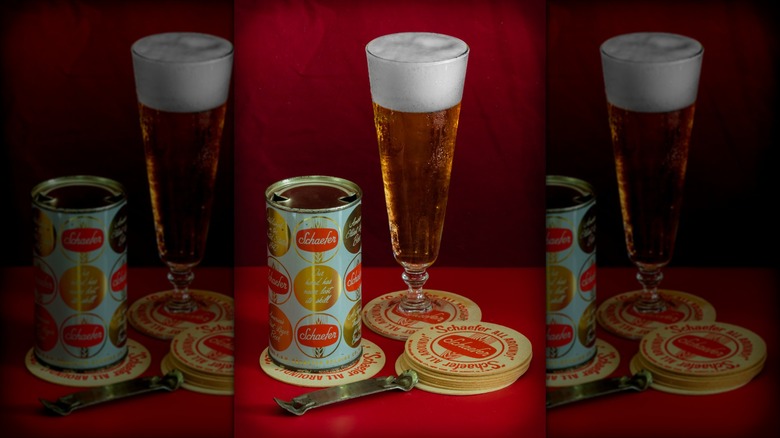
Mike Reddington/Shutterstock
Schaefer was once a major player in the American beer scene, with roots going back to the mid-1800s. It originated in New York but by the 1960s it had expanded into the Midwest due to increased sales. This is definitely one of the beers your grandparents would have had in their fridges if they were in the country in the latter half of the 20th century.
It was once known for its memorable slogan: "Schaefer is the one beer to have when you're having more than one." That tagline said what you needed to know. The brand wasn't trying to blow anyone away. It was affordable, reliable, and brewed for volume.
This was a beer that was simple, dependable, and catered to the popular taste at the time. It was pale, crisp, and easy-drinking. In an era before craft beer redefined expectations, Schaefer was what beer looked like for a lot of people.
Over time, the brand's fortunes faded. It changed hands a number of times and is now owned by the Pabst Brewing Company, as are a lot of once-popular vintage beers. If you're looking for something solid, if unexciting to drink, this might just fit the bill.
Rhinelander Beer
In northern Wisconsin, Rhinelander Beer was once a local legend. Founded in 1882, the Rhinelander Brewing Company made its name with an unusually sized bottle called the "shorty." This was a 7-ounce stubby that became a staple of bars and bowling alleys across the region. It was so popular that the local baseball team was nicknamed "The Shorties." Today, it seems retro, but it's also just right when you don't want a full 12 ounces, so it's practical, too.
The beer itself was much what you'd expect from a Midwestern lager — light, crisp, and made to go down easy. But, the fact is, beer doesn't have to be high-end. In fact, even Anthony Bourdain disliked craft beer. However, it was the packaging and loyal local fans that really made Rhinelander stand out. Even as the brewing industry consolidates and many old school breweries close, Rhinelander manages to hang on, mostly by staying close to its roots.
Production stopped for a while, but the brand has since been revived. You can even still find a shorty if you're in the right place. It's not widely distributed, and most people outside of Wisconsin have never heard of it. But for those who grew up with it, or anyone interested in the history of American beer, it's worth tracking down. Today, the brewery has a taproom in Rhinelander, Wisconsin that serves a range of craft beers, and some old faves. It even produced a Creme Egg stout in collaboration with Cadbury.
Hamm's
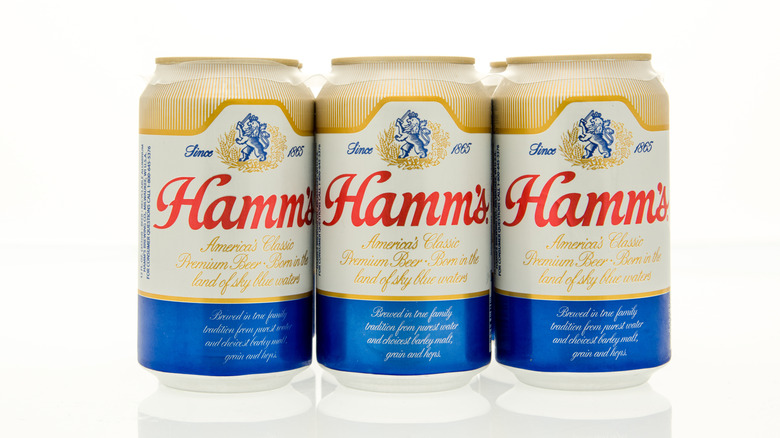
Keith Homan/Shutterstock
Hamm's isn't as easy to find as it once was, but for decades it was a fixture in American beer culture, particularly across the Upper Midwest. Brewed in St. Paul, Minnesota, since the 1860s, Hamm's was built on a reputation of reliability and quality brewing, the founder having brought his knowledge over from Germany.
For many, it was part of the cultural landscape of the Midwest. Families knew the jingle by heart — the words "from the land of sky blue waters" still living rent free in some people's heads — and the cartoon Hamm's bear was practically a Midwestern icon.
The beer itself isn't trying to impress you with complexity. It's light, crisp, and slightly sweet, with a clean grain flavor that finishes quickly. That made it the perfect go-to for long evenings at the local bar or a six-pack with friends after work. It was the kind of beer that showed up at union meetings, VFW halls, bowling leagues, and neighborhood fish fries from Wisconsin to North Dakota.
Today, Hamm's still exists, but it's mostly under the radar. You'll find it in certain Midwestern grocery stores and dive bars, but it's no longer front-and-center like it once was. That's a shame, because for an honest, old-school American lager, it's aged surprisingly well. If you're into retro beer cans and vintage vibes, you should be checking this one out.
Schlitz
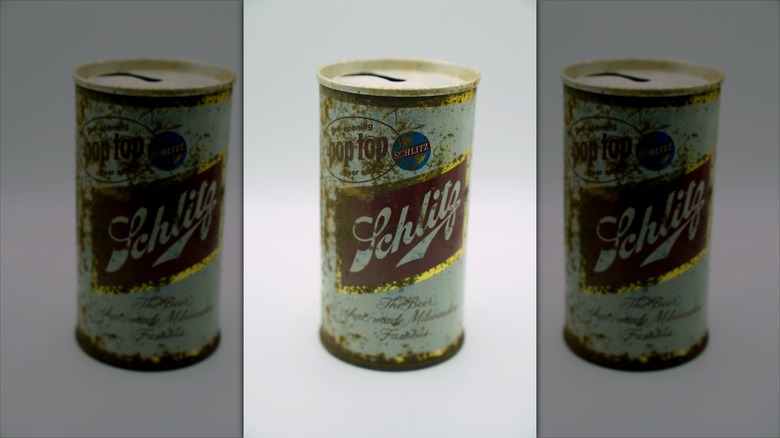
26ShadesOfGreen/Shutterstock
Once billed as "the beer that made Milwaukee famous," Schlitz was the biggest beer in the country for a time. In the early 20th century, it rivaled Anheuser-Busch in size and reach, and for decades it was a staple in American households. If you drank beer in the '50s or '60s, odds are you drank Schlitz. It even had some cool factor; after all, it was the beer Clint Eastwood's character drank in "Dirty Harry."
But things took a turn in the 1970s. In an effort to cut costs and speed up production, Schlitz changed its brewing process, and longtime fans noticed. The new version didn't taste quite right, and the brand's reputation took a serious hit. By the early '80s, it had lost ground. There was a time when it looked like this brand would be lost to time, but it's one of the beers that made a surprising comeback. It eventually got bought up by Pabst and while it had a few false starts, it now bears some resemblance to the beer of old.
You can still find Schlitz today, especially in parts of the Midwest, and there's something comforting about how little the branding has changed. The current recipe is closer to the original, too. It's crisp, clean, and has a malty backbone. It's not trying to compete with craft IPAs or fancy imports. But if you're after a no-nonsense American lager with history and a little grit, Schlitz fits the bill. It might not be the trendiest beer in the cooler, but it's got a legacy.
Iron City Beer
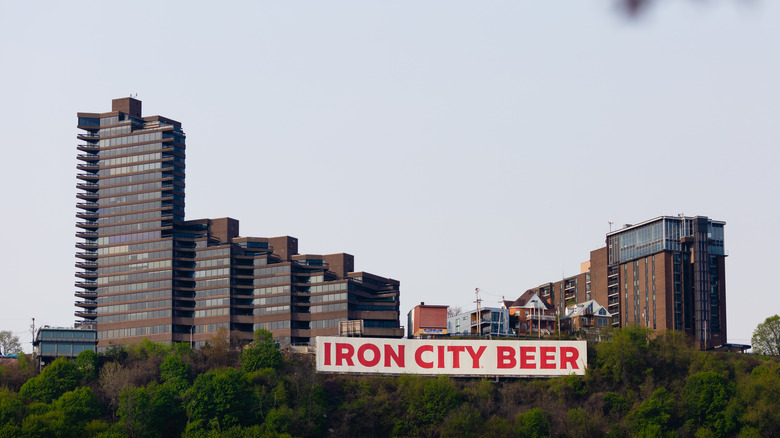
mary981/Shutterstock
Pittsburgh's own Iron City Beer is the kind of hometown brew that inspires fierce loyalty. If you know someone from Pittsburgh, they're probably a fan of this beer, even if they don't love the taste. First brewed in 1861, it was the first beer sold in a pull-tab can so it holds onto that little part of history. Crisp with a touch of corn sweetness and malty notes, it doesn't try to do anything fancy, it just quenches your thirst and gets the job done.
While its national presence has dwindled, Iron City still has strong regional support. You'll find it in bars and beer distributors around Pittsburgh, and there's even been a renewed effort in recent years to bring it back into the spotlight with updated packaging and marketing efforts. We're glad it hasn't gone the way of other, discontinued beers.
Iron City may not be the coolest beer on the block, but it's part of Pittsburgh's DNA. For those who grew up with it, it holds a special place in their hearts. It's a piece of the city's industrial past and a reminder that regional pride can still mean something in a market dominated by big brands. Not only can you buy it online, if you want to give it a try, you can also get Iron City-branded tote bags, coolers, and other swag.
National Bohemian
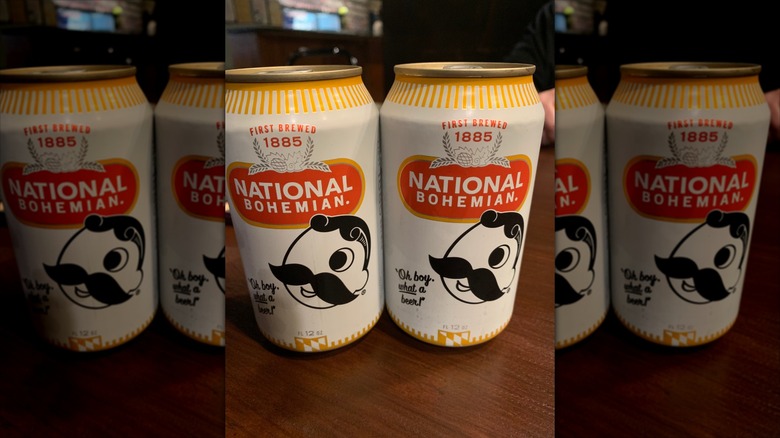
010110010101101/Shutterstock
If you've ever spent time in Baltimore, you know about Natty Boh. With its iconic one-eyed mascot and retro slogan — "Oh boy, what a beer!" — National Bohemian is deeply woven into the city's culture. Even though it hasn't been brewed in Baltimore for years, you'll still find it on tap and in fridges at just about every bar in town. It's so popular that Marylanders want to change the state song to the National Bohemian jingle.
First brewed in 1885, National Bohemian hit its stride in the mid-20th century. It was affordable, easy-drinking, and tied closely to the identity of the region. Orioles games, crab boils, and Natty Boh went hand in hand.
Today, National Bohemian is owned by Pabst and brewed elsewhere, but the connection to Baltimore remains. It's still a basic lager — light, a little grainy, and made for drinking by the six-pack. It's not going to wow a craft beer crowd, but it doesn't need to.
If you're in Baltimore looking for a beer and someone offers you a Natty Boh, it would be rude not to accept. It's tradition and a small taste of local history. Double IPA, hazy pales, and sours might get all the love, but there's something genuine about this kind of beer, all simplicity and a strong local identity.



